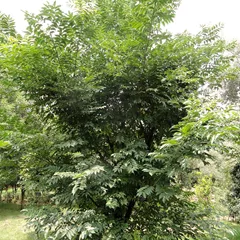Collapse of Yin
The information provided here is not a replacement for a doctor. You shouldn't use it for the purpose of self-diagnosing or self-medicating but rather so you can have a more informed discussion with a professional TCM practitioner.
At a glance
Preliminary reading: What is a pattern? The concept of The four levels theory The concept of Yin
Key attributes
Chinese name: 亡阴 Pinyin name: Wáng Yīn
Pattern nature: Empty
Causes
Precursor patterns: Heat in Pericardium Heat in Nutritive Qi level
Common causes: External pathogenic factor
Diagnosis
Common symptoms: Emaciation Malar flush Night sweats Constipation Restlnessness and four other symptoms
Pulse type(s): Rapid (Shu), Fine (Xi)
Tongue description: Dark-Red and Dry tongue without coating
Treatment
Treatment principle: Rescue Yin, restore consciousness.
Common formulas: Da Bu Yin Wan
Pathology
This is one of the five patterns of the Blood level, the fourth and last level of the Four Levels theory. This means this is a very serious pattern where an External Pathogen has penetrated deeply within the body.
Collapse of Yin indicates an extremely severe state of Emptiness. It also implies a complete separation of the Yang from the Yin. Collapse of Yin is often, but not necessarily, followed by death.
The main manifestations are abundant perspiration (especially at night), low grade fever with the skin hot to the touch, retention of
urine and constipation.
Causes
Precursor patterns: Collapse of Yin can derive from Heat in Pericardium Heat in Nutritive Qi level
External pathogenic factor: The main original cause of Heat in Nutritive Qi level is an Exterior Pathogenic Factor (typically Wind-Heat) that has invaded the Interior and progressed to this level.
Diagnosing Collapse of Yin
Diagnosing a pattern in Chinese Medicine is no easy feat and should be left to professional practitioners. In particular one has to know how to differentiate between different types of pulses and tongue coatings, shapes and colors as well as learn to read from a long list of seemingly unrelated symptoms.
Pulse type(s): Rapid (Shu) or fine (Xi)
Tongue description: Dark-Red and Dry tongue without coating
Main symptoms: Emaciation Malar flush Night sweats Constipation Restlnessness Five palm heat Low-grade fever Urinary retention Dry mouth with desire to sip liquids
Treating Collapse of Yin
Treatment principle
Rescue Yin, restore consciousness.
Herbal formulas used to treat Collapse of Yin



The top herbs in Da Bu Yin Wan are Prepared Rehmannia (Shu Di huang), Tortoise Plastrons (Gui Ban) and Phellodendron Bark (Huang Bo)
Da Bu Yin Wan
Source date: 1481 AD
Number of ingredients: 4 herbs
Key actions: Enriches the Yin. Directs fire downward.
Formula summary
Da Bu Yin Wan is a 4-ingredient Chinese Medicine formula. Invented in 1481 AD, it belongs to the category of formulas that nourish Yin and tonify.
